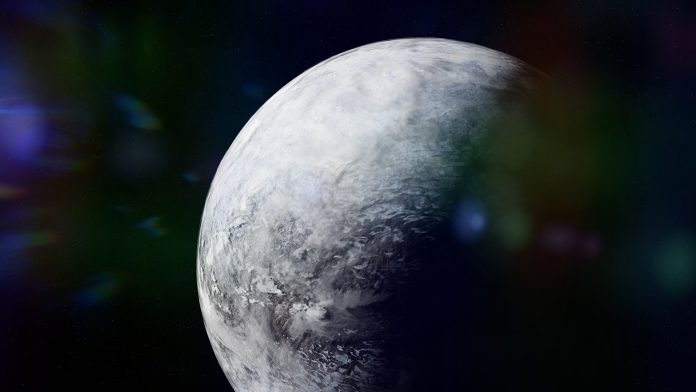Astronomers have made the rare discovery of a small and cold exoplanet and its massive outer companion.
Researchers have found a cold exoplanet with a radius and mass between that of Earth and Neptune. The planet has a potential orbit around its host star of 146 days. The planetary system contains an outer companion, which is a lot larger – roughly 100 times the mass of Jupiter.
This discovery is rare as exoplanets smaller and lighter than Neptune and Uranus are hard to detect, with very few of them being identified. These systems are thought to be a key step for understanding planetary formation and finding a planet that is similar to Earth around stars.
The planetary system is discovered around the star HD88986 and has a similar temperature to the Sun. It has a slightly larger radius than the Sun and is bright enough to be seen by UK observatories.
The study, ‘The SOPHIE search for northern extrasolar planets,’ is published in the journal Astronomy & Astrophysics.
The cold exoplanet
The planetary system includes a cold exoplanet that is similar to Neptune – a so-called sub-Neptune, HD88986b. Among known exoplanets that are smaller than Neptune or Uranus with precise mass measurements, this planet has the longest orbital period – 146 days.
Neda Heidari, study lead and an Iranian postdoctoral fellow at the Institut d’astrophysique de Paris (IAP), said: “Most of the planets we’ve discovered and measured for their mass and radius have short orbits, typically less than 40 days.
“To provide a comparison with our solar system, even Mercury, the closest planet to the Sun, takes 88 days to complete its orbit. This lack of detection for planets with longer orbits raises challenges in understanding how planets form and evolve in other systems and even in our solar system.
“HD88986b, with its orbital period of 146 days, potentially has the longest known orbit among the population of small planets with precise measurements.”
How was the exoplanet detected?
The exoplanet was detected using the SOPHIE – a high-precision spectrograph at the Haute-Provence Observatory, France. The spectrograph identifies exoplanets using the radial velocity method, measuring tiny motion variations of the star induced by planets orbiting it.
The observations led to finding the planet, enabling the team to estimate its mass to be around 17 times that of the Earth.
NASA’s space telescope Transiting Exoplanet Survey Satellite (TESS) and the European Space Agency’s (ESA) space telescope CHaracterising ExOplanet Satellite (CHEOPS) have also indicated that the planet potentially transits in front of its host star. This happens when its orbit passes on the line of sight between Earth and the star, maybe occulting the star in the process. This causes a decrease in its brightness that can be observed and quantified.
The complementary observations helped to estimate that the diameter of the cold exoplanet is around twice the size of Earth’s. The study’s findings rely on over 25 years of observations, including data from ESA’s Gaia satellite and the Keck Telescope in Hawaii.
A pathway to study Earth-like planets
With an atmosphere temperature of 190°C, HD88986b allows astronomers to study the composition of so-called cold atmospheres. Most exoplanets that are detected have atmospheres that are about 1,000°C.
As sub-Neptune HD88986b has a wide orbit, HD88986b underwent rare interactions with other planets that may exist in the planetary system. The cold exoplanet potentially underwent a weak loss of mass from the strong ultraviolet radiation of the central star.
Therefore, it could have retained its original chemical composition, allowing scientists to explore the possible scenarios for the formation of the planetary system.
Thomas Wilson, co-leader of the analysis of satellite data from the University of Warwick, said: “HD88986b is essentially a scaled-down Neptune, between the orbits of Mercury and Venus. It has become one of the best-studied small, cold exoplanets, paving the way for studying its atmosphere to understand its similarity to our own planet, Earth.
“It also orbits a star with a similar temperature to the Sun, making it a precursor to the Earth-like planets to be found by the PLATO space telescope, in which Warwick plays a leading role.”
The outer companion of the exoplanet
The astronomers revealed a second, outer companion around the cold exoplanet. The outer planet is 100 times the mass of Jupiter, and its orbit has a period of several tens of years. More observations are needed to understand its nature and determine its properties.
Wilson said: “We collected data from telescopes pointing at HD88986 for over 25 years, making this one of the longest-studied exoplanet systems. This wealth of data revealed a second outer companion more massive than Jupiter that may have been important for the formation of the Neptune-like planet in a similar way to Jupiter in our own Solar System.”









